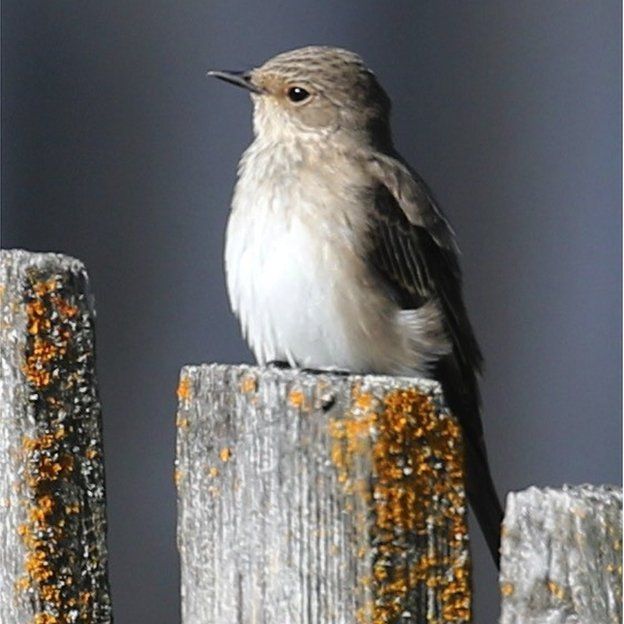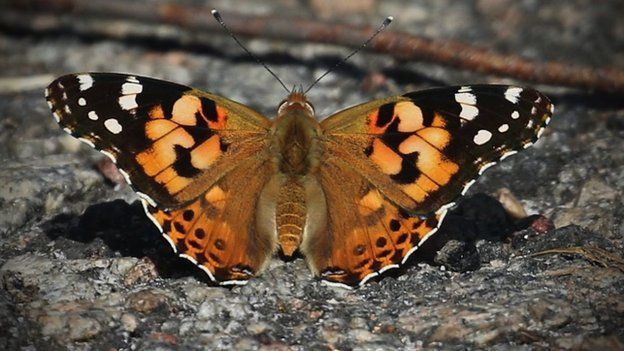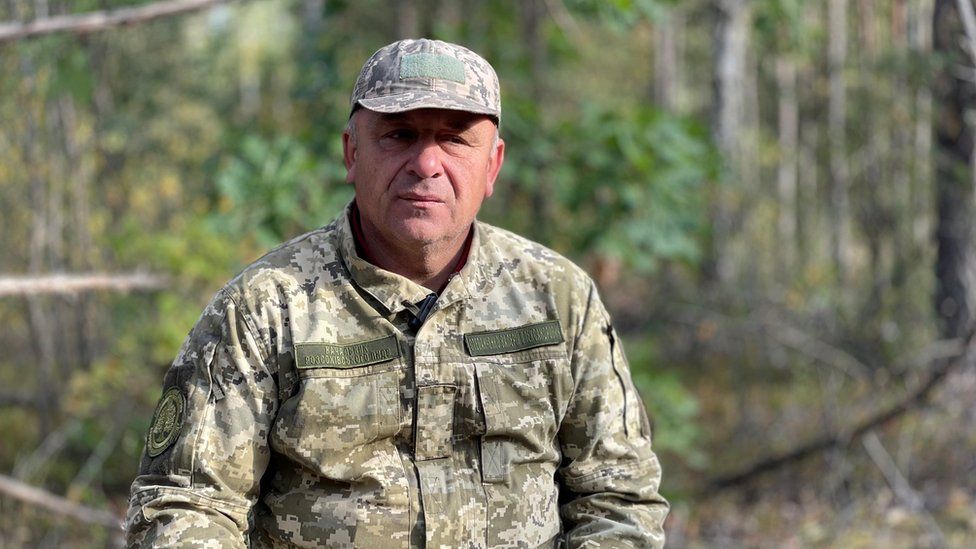 BBC/Frank Gardner
BBC/Frank GardnerThe human and material cost of Russia’s invasion of Ukraine is well documented. But rare species of animals and flowers that had flourished in the country’s north have also been badly hit by the invaders’ destructive use of weaponry and landmines, with fears they will take decades to recover.
Valeri Stepanenko Oleksandrovych is dressed like a soldier, flanked by men armed with Kalashnikovs while keeping a constant eye on the news.
He is a forest ranger in Ukraine’s Drevlyansky nature reserve, helping to patrol what once was a pristine sanctuary for wildlife in northern Ukraine. With its marshes, lakes, woods and heathland, it is a place so rich in wildlife it has even been called Europe’s Amazon.
But situated just 15 miles from the border with Belarus, it is in a dangerous part of the world and Mr Stepanenko has every reason to be wary.
It was across this border in February that Russia sent rockets, missiles and artillery shells, followed by an invading armoured column that got all the way south to the outskirts of the capital, Kyiv, before being driven back by Ukrainian defenders armed with the latest Western weapons.
“Russian land mines,” Mr Stepanenko says, perched on a fallen log beside a forest track. “That’s the worst legacy left behind by the invasion. That and the forest fires they set off with their shell fire.”
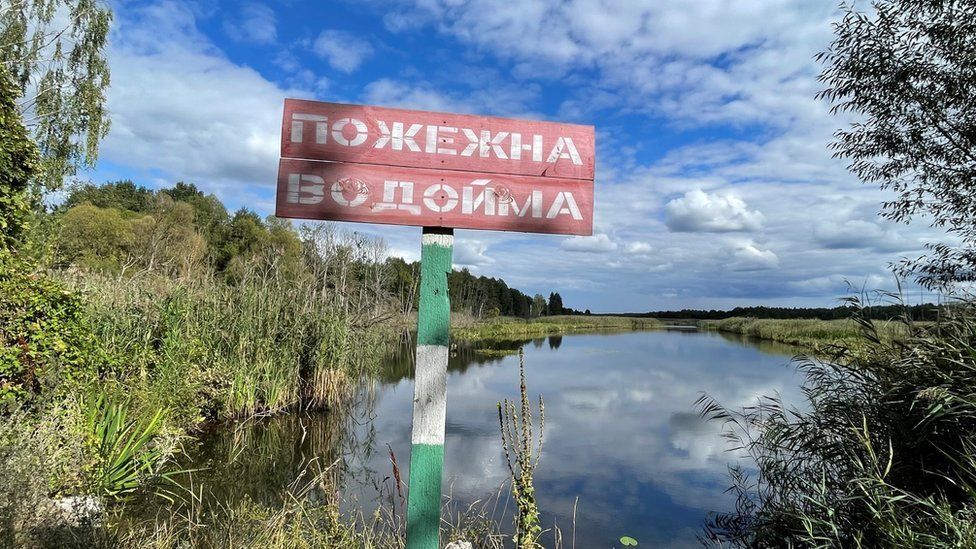
The Russians invaded Ukraine on 24 February from three sides – from the north in Belarus, their own territory in the east, and Crimea which they had seized and annexed in 2014.
It is fair to assume preserving Ukraine’s rarer species of flora and fauna was probably not top of President Putin’s priorities when he sent his tanks rolling across the border.
The artillery shells the Russians fired into northern Ukraine ignited forest fires that have burnt through more than 2,000 hectares (nearly 5,000 acres) of previously-untouched forest, sending wildlife scattering, incinerating recently-discovered orchids and hundreds of other rare plants.
One look at the scorched and fire-blackened trunks of the trees suggests wildlife in this part of Ukraine will not be coming back any time soon. There is simply nothing for them to eat, nowhere for them to hide.
Shells also landed on the nearby town of Narodychi where, according to the Ukrainians, local collaborators helped the invading Russians by guiding their artillery fire towards concentrations of troops.
“We still have to watch out for infiltrators coming across from Belarus,” says Mr Stepanenko.
This would explain the heavily-armed Ukrainian patrols we witnessed here near the border – small groups of fit-looking men carrying sniper rifles and walkie talkies, with Alsatians panting at their side.
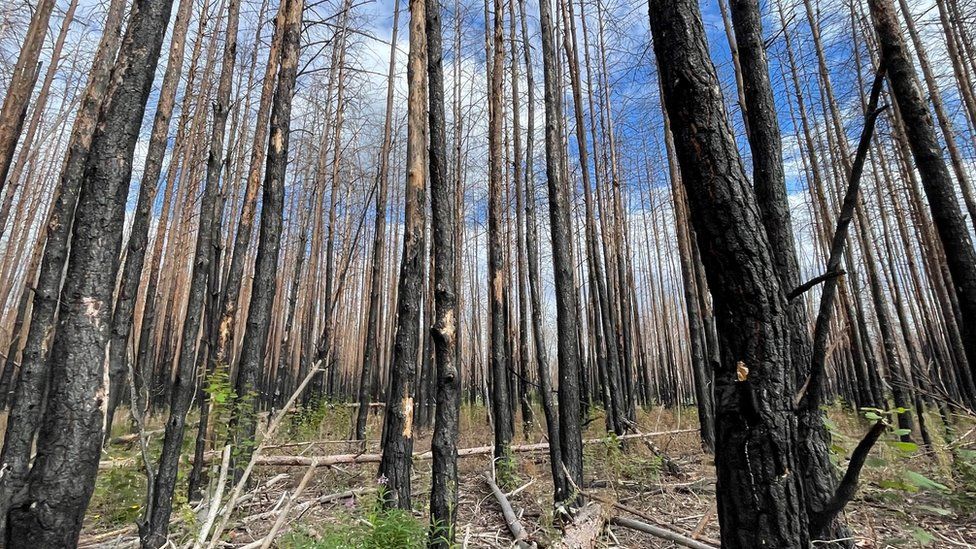
This part of Ukraine is a region known as Polissia, a giant oval on the map that extends into Belarus, Poland and Russia. It is home to species like lynx, wolf and moose that disappeared from most of the rest of Europe a long time ago.
The Russian invasion is not the first disaster Polissia has endured. On 26 April 1986, reactor number four in the Chernobyl nuclear power plant exploded, sending a plume of highly radioactive particles right across Europe and contaminating parts of northern Ukraine with radionuclides.
Chernobyl is just 40 miles (65km) away – most of the remote villages and cottages in this part of Ukraine were abandoned when the human population was hurriedly evacuated to safety.
Yet, the wildlife largely survived that disaster, even benefitting from the newfound absence of humans.

“There have been two wolf packs in this region, and the Polissian wolf is one of the largest in the world,” Mr Stepanenko explains. “Before Chernobyl, they used to skirt around the villages but now, if it suits them, they would come straight through them at night.”
The landmines planted by the Russians have left Ukraine’s part of Polissia with a very different problem. Russia is not party to the 1997 Mine Ban Treaty, although Ukraine is. Since they invaded, Russian forces have planted at least seven different kinds of anti-personnel mines in various parts of the country, mostly in unmarked minefields.
Here in the northern forests, that means the unpaved tracks the rangers used to patrol down are now too dangerous to use. In early September one of their vehicles drove over a landmine, killing one of the occupants and badly injuring another.
“Sometimes,” says Mr Stepanenko, “we come across the remains of a deer that has been blown up by a mine. The animals can’t see them. It’s so sad.”
So, how long it will it take to make the area safe again?
He takes a long drag of his cigarette before raising his eyes to the pine branches swaying gently in the autumn breeze. “Years,” he answers. Then he turns and adds with a sigh, “Decades, in fact.”
